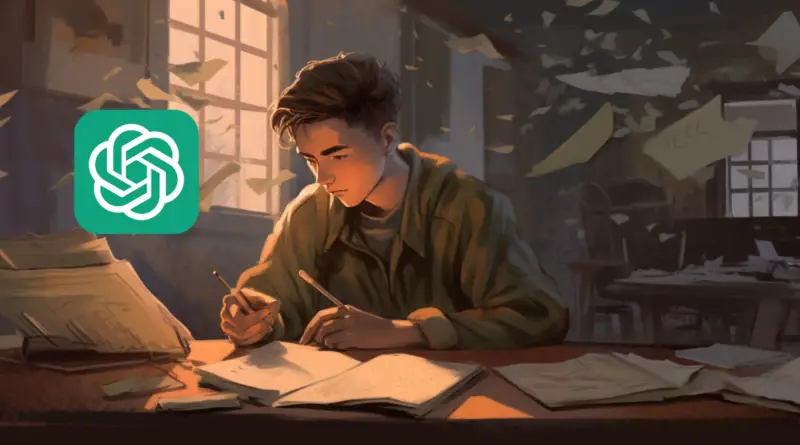Best Ways To Use ChatGPT for Essays Without Plagiarizing
Writing essays can be as thrilling as watching paint dry. Seriously, the added pressure of avoiding the dreaded plagiarism trap doesn’t make things easier. But in this technological era, where AI language models like ChatGPT reign supreme, there’s a glimmer of hope for creating original, plagiarism-free masterpieces in less time than usual.
Now, to the burning question that’s probably tickling your mind, “Would I be able to use ChatGPT to write essays without plagiarizing?” Well, The short answer is, yes, you can use ChatGPT to write essays without plagiarizing. However, it requires a thoughtful approach and adherence to certain strategies to ensure originality in your work.
In this article, I will delve into the techniques and practices that can help you harness the potential of ChatGPT as a writing aid while steering clear of plagiarism concerns. By incorporating these strategies into your essay writing process, you can leverage ChatGPT effectively while upholding academic integrity and producing unique, authentic essays. Let’s dive in, shall we?
How to Avoid Plagiarism While Using ChatGPT for Essays
Originality and academic integrity are the pillars upon which your success as a writer rests. But by following these best practices, you can confidently embrace ChatGPT as a valuable ally in your essay writing without being flagged for plagiarism.
Develop a Strong Outline and Define Your Writing Goals
A well-organized essay is like a well-built structure, sturdy, logical, and pleasing to the reader’s eye. Before diving headlong into the writing process, invest time in developing a strong outline and structure.
Create a coherent flow of ideas, organizing them into clear sections and paragraphs. I personally like outlining subtopics and supporting evidence for each main point, ensuring a seamless progression of thoughts throughout my essay.
A writer without clear goals is like a ship without a rudder, drifting aimlessly in the vast ocean of words. To avoid the plagiarism whirlpool, take the time to define your writing goals and objectives. Understand the purpose and scope of your essay. Identify the key arguments or points you wish to address.
Conduct Thorough Research Before Using ChatGPT
Before writing any kind of essay with the assistance of ChatGPT, it is crucial to arm yourself with the power of knowledge. Conduct thorough research on your chosen topic. Delve into reputable sources, scholarly articles, and authoritative texts to gather comprehensive information.
The deeper your understanding, the more equipped you’ll be to create original content with the help of ChatGPT. You can create better prompts and spot texts that are probably copied from already published materials.
Use ChatGPT as a Source of Inspiration and Ideas, Not a Content Generator
Yes, ChatGPT might seem like the magical genie of words and ideas, but while writing an academic piece like an essay, it is important not to fall into the trap of laziness.
ChatGPT is a remarkable tool that should be teemed with your creative potential. However, to avoid the pitfalls of plagiarism, it is essential to treat ChatGPT as a source of inspiration and ideas rather than a content generator.
Engage with ChatGPT to stimulate your imagination, spark innovative thoughts, or gain fresh perspectives. But remember the responsibility to transform those ideas into your own unique expressions lies solely with you. At the end of the day, your professors plan on grading you based on your original opinions.
Paraphrasing and Utilizing Proper Citation and Referencing Techniques
Effective paraphrasing allows you to incorporate external sources into your essay while giving due credit to the original authors. Remember to provide proper attribution through in-text citations, acknowledging the intellectual contributions of others.
Citations and references are the loyal guardians of academic integrity. Familiarize yourself with the required citation style, be it MLA, APA, or any other prescribed format. As you weave external sources into your essay, create accurate and consistent citations for each referenced work.
Compile a comprehensive bibliography or reference list, leaving no room for ambiguity or unintentional plagiarism even with AI-generated texts.
Can ChatGPT Be Detected by Turnitin?
Yes, Turnitin can detect AI-assisted writing from tools like ChatGPT. Turnitin, with its clever algorithms, is designed to detect similarities and potential plagiarism in written works. However, when it comes to identifying text generated by AI models like ChatGPT, things can get a bit tricky.
You see, the effectiveness of Turnitin in detecting AI-generated content depends on various factors. How sophisticated is the AI model? Has Turnitin adapted its algorithms to catch AI-generated content? It’s a never-ending battle of wits and technological advancements.
So, while ChatGPT may be a great essay-writing companion, it is wise to exercise caution and follow the rules set by your educational institution.
Is It Illegal to Use AI to Write an Essay?
Using AI tools like ChatGPT to write an essay is not inherently illegal but it can be considered a copyright infringement which is punishable by most institutions. There are guidelines that often require students to produce their own original work, properly attribute sources, and avoid plagiarism.
It’s essential to understand the policies and guidelines of your educational institution regarding the use of AI tools for academic purposes. Some institutions may have specific rules or restrictions in place, so it’s always a good idea to consult your professors or academic advisors for clarification.
Is Paraphrasing Still Plagiarizing?
Yes, paraphrasing can still be considered plagiarism when the original author is not credited for their work. Paraphrasing, in essence, involves expressing someone else’s ideas or information in your own words.
It’s like taking a concept, giving it a fresh coat of paint, and presenting it as your own masterpiece. But even with a new coat of paint, if the underlying structure and essence of the original idea remain unchanged, it is still considered plagiarism.
So, when it comes to paraphrasing, it’s not just about swapping a few words or rearranging sentence structures. It’s about capturing the core idea and expressing it in your own unique voice. The aim is to demonstrate that you truly understand the concept and can articulate it in a fresh and original way.
Always remember to give credit where credit is due. Properly attribute the original source through in-text citations and reference lists. This way, you can showcase your understanding while respecting the intellectual contributions of others.
Is ChatGPT a Great Tool For Writing Essays?
Yes, ChatGPT can be a fantastic tool for writing essays, the results consistently blow my mind. With ChatGPT, you have a virtual writing companion that can offer inspiration, help you overcome writer’s block, and even assist in structuring your essay. It can act as a springboard for generating original thoughts and exploring different perspectives.
Furthermore, ChatGPT’s ability to understand the context and generate coherent responses can be particularly helpful when seeking clarification on complex concepts or when looking for ways to articulate your ideas more effectively.
However, it’s important to remember that ChatGPT should be used as a tool to enhance your writing skills, rather than as a substitute for your own critical thinking and creativity. It’s still crucial to apply your own judgment and ensure the authenticity and originality of your essays.





Pingback: Does ChatGPT Give the Same Answer to Everyone? – The Tech Vox